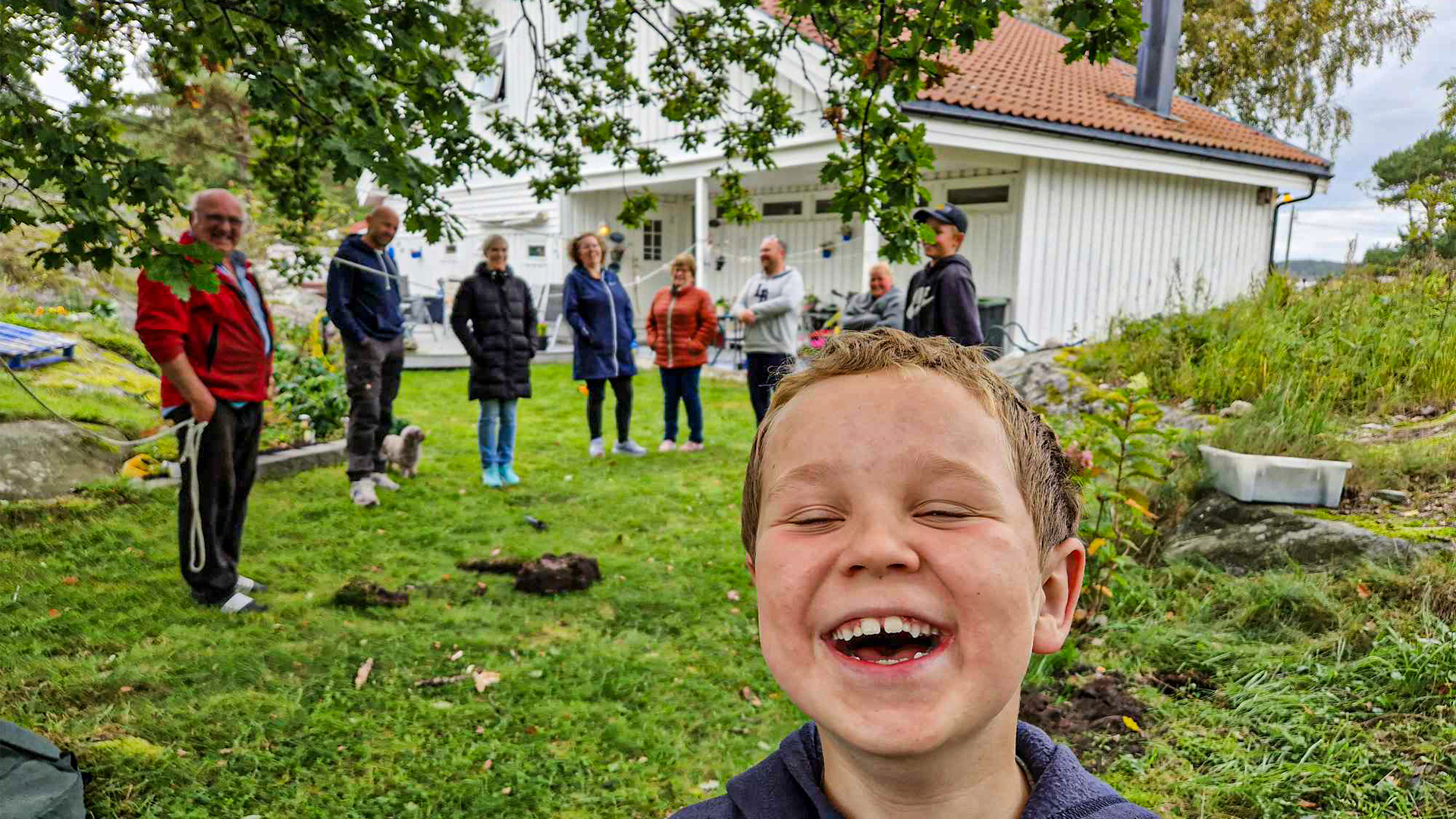Norwegian family finds 1,200-year-old Viking treasure while searching for a lost earring in their yard
The discovery includes two roughly 1,200-year-old brooches, made from bronze and once gilded with gold, that may have belonged to an aristocratic woman.

A family in Norway unearthed more than they were expecting when they used a metal detector to search their yard for a lost earring.
Instead of finding the modern jewelry, they detected a signal beneath a large tree behind their house. And when they dug down, they discovered relics from a Viking burial: two bronze ornaments that experts say were once covered in gold.
The artifacts may be the first Viking Age (A.D. 793 to 1066) finds on the island of Jomfruland, confirming that people lived there at that time, Vibeke Lia, an archaeologist with the Vestfold and Telemark County Council, told Live Science.
Jomfruland is a remote island on Norway's southeast coast, facing the Skagerrak strait and Denmark. Many of its houses are vacation homes, and about 75 people live there permanently.
When the metal detector signaled the buried hoard, the family stopped digging and contacted local government archaeologists to investigate the find, according to a Facebook post by the county council's cultural heritage department.
Related: Viking sword from warrior's grave unearthed in family's yard in Norway
Remote island
Lia said several piles of loose rock, called cairns, had previously been found in southwest Jomfruland. While researchers supposed the cairns could have been made in the Viking Age, perhaps as a means to lay claim to the land and nearby sea route, there is no mention that people lived on Jomfruland before the first historical records were made in the Middle Ages, she said.
Get the world’s most fascinating discoveries delivered straight to your inbox.
The new discovery, of what seems to be the grave of an aristocratic Viking woman, now suggests that the cairns were, in fact, made by Vikings.
The larger artifact found in the grave is an oval-shaped brooch that would have been worn by a woman on a halter dress, to fasten the shoulder straps at the front, Lia said. Such brooches were commonly found in the graves of Viking women, and its style was characteristic of the ninth century.
"They come in pairs, one for each strap, so there should be another one there," she said.
Viking bling
The other object was harder to identify, but the archaeologists have now determined that it, too, was a brooch — this one circular.
Lia said molds for such brooches had been found at archaeological sites in the early Viking Age town of Ribe, Denmark, which was founded in the sixth century. However, the decorations on the newfound brooch suggest it was made in the ninth century.
The brooches were decorated with intricate engravings of animals and geometric patterns. Both were made from bronze and had traces of gold on them, which indicated they had been gilded, she said.
The artifacts' location in a yard — rather than on a farm, where many other relics are found — may have helped to preserve the items.
"They are in pretty good condition compared to most metal-detecting finds we get, because this site has never been plowed," she said.
Lia is unsure if the site of the finds will be excavated because it may be protected as a grave. "The next step is to assess whether this site is in danger of deterioration," she said. "If it's safe there, then it will probably not be dug but preserved where it is."
Tom Metcalfe is a freelance journalist and regular Live Science contributor who is based in London in the United Kingdom. Tom writes mainly about science, space, archaeology, the Earth and the oceans. He has also written for the BBC, NBC News, National Geographic, Scientific American, Air & Space, and many others.





